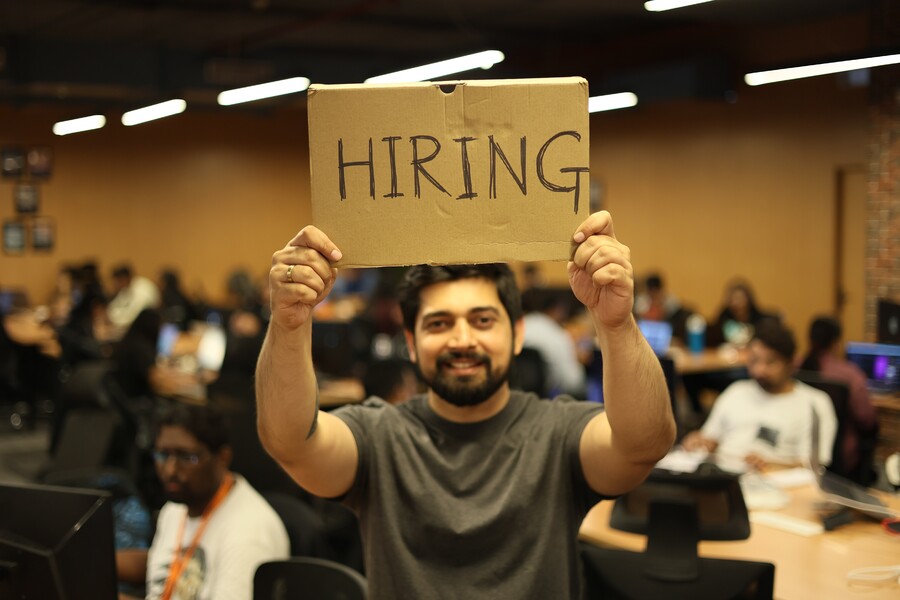“There are no mistakes. Just happy accidents.”
Oh, to be Bob Ross.
On one level, entrepreneurs can relate to his giddy optimism. They aren’t afraid to make mistakes. Innovation requires trial-and-error. Success depends on embracing failure and moving forward.
But there’s nothing happy about the mistakes that are costly and time-consuming, and the stakes take their toll on mental health. 92 percent of small business owners have experienced mental health problems over the past two years.
The future isn’t completely painted black. Today, business owners have a 30% better chance of creating a successful business than they would have in the late ‘70s. We have access to a lot more resources. We’re able to learn from the mistakes of others.
We’ve pulled together a list of mistakes to avoid in your hiring process.
1. Not having a clearly defined interview process.
Whether you’re hiring one or one hundred new team members, think through what the steps in your hiring process are going to be, and stick to it. Inconsistency will delay the process and make it difficult to define who will be successful in the roles.
Every candidate needs to have the same experience, regardless of whether they’re applying for a role as an accounts manager or senior software engineer. Communicate the same timeline to each applicant. Send links to a central scheduling calendar to make it easy for the candidate to take the next step. To minimize bias, use the same questions in the interviews and an objective rating system to evaluate responses.
2. Not crafting job descriptions that are aligned with the company’s mission and culture.
A job description clarifies your expectations of what you need for the role. If these expectations aren’t addressed in the job description, it leaves gray areas in the interview process, and it’s difficult to determine whether a candidate is a good fit. When they’re included, you can initiate conversations about both your and their expectations during the interviews.
A candidate can see how the position contributes to the company’s mission when the responsibilities are specified in the job description. They’ll know if they’re a good fit, and either be motivated to pursue the role, or self-select out of the process.
3. Not involving the right team members in the interview process, and not preparing each person for their part in the process.
For the sake of consistency, the same person needs to conduct each interview. This person makes sure that there’s no overlap with who does what during the hiring process, and that each step is covered. When roles aren’t coordinated, information gets missed and the right candidate can fall through the cracks.
It’s a good idea to include a team member that will be directly involved with the role being hired. There’s no need to bring in unrelated people. For example, if you’re hiring a software engineer, you don’t need to factor in feedback from a product manager.
4. Not giving a skill assessment as a part of the hiring process.
Filtering for a type of college degree may not be enough to accurately gauge an applicant’s skillset. It’s like assuming that a NYC tourist has walked around Times Square, when they may have skipped out after snapping a selfie with the Statue of Liberty.
The right assessment confirms that a candidate’s skills match the requirements of the role. This sets a candidate and the team up for success.
5. Sending an offer before the candidates gives a verbal yes.
Once they have your offer, they can use it as a bargaining chip if they’re receiving offers from other companies. You’ll lose more than your ideal candidate. If they walk, you’ve just wasted time and resources on their hiring process.
Asking a candidate to accept a verbal offer is a common practice, and it’s legally binding. Be available to answer any questions as they’re making their decision, and let them know that you’ll send the written offer as soon as you have their positive response.
6. Having a huge time gap between signing and the first day on the job.
Waiting to onboard a new hire puts unnecessary stress on the teams that are functioning without someone in that role. It adds to their workloads, which leads to burnout. The delay may also give your recruit time to shop around and pursue another offer.
There are situations that might necessitate stretching out the timeline between the offer’s acceptance and the first day on the job. For example, if you’re hiring around the holidays, they may want to transition early in the new year. When a delay is unavoidable, set up a weekly check-in. If it’s possible, start them on tasks that are legally okay for them to do.
7. Not having a good onboarding process.
One of the biggest mistakes in hiring is not factoring in the retention of a new team member. New team members are most overwhelmed when they start their jobs. This is easily remedied by prioritizing the onboarding process. Yet 36% of companies do not have a structured onboarding process.
A solid onboarding process explains what a new person does and how they do it. They know who is available to answer their questions. There’s a checklist in place to cover the nitty gritty administrative details- how they upload their time, how they get paid, etc. Onboarding can increase new hire retention by 82% Companies with a solid onboarding process experience 62% greater new hire productivity.
Hiring top talent is no accident. When your hiring process works, you attract and keep the right people to the right role at the right time. Everyone is happy.









